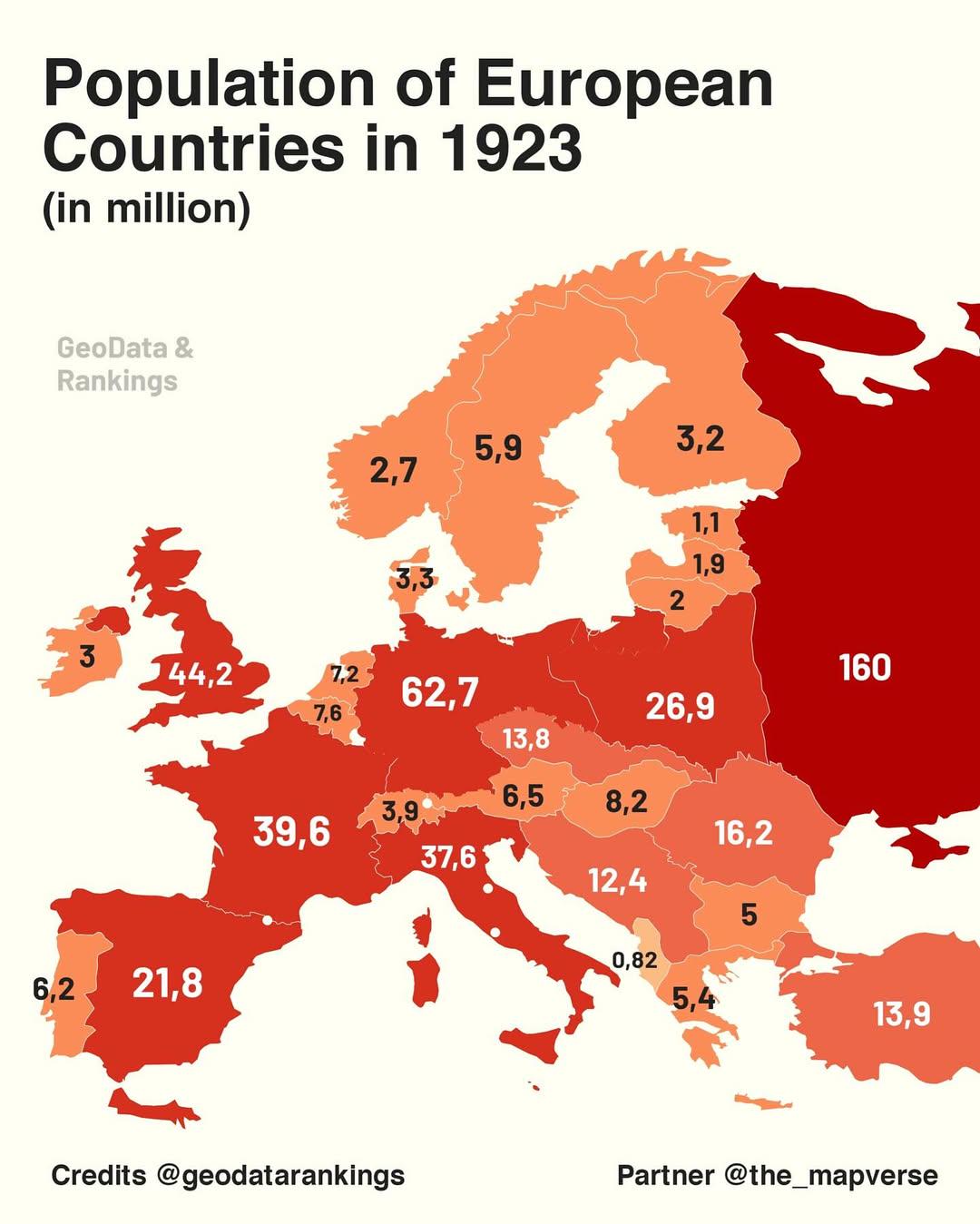Population of European Countries in 1923 Map


Marcus Rodriguez
Historical Geography Expert
Marcus Rodriguez specializes in historical cartography and geographic data analysis. With a background in both history and geography, he brings unique...
Geographic Analysis
What This Map Shows\nThis map illustrates the population distribution across European countries in the year 1923, represented in millions. It provides a snapshot of demographic trends following World War I. At this time, Europe was experiencing significant socio-political shifts, and the map vividly depicts how these changes influenced population sizes in various nations.
Transitioning to the topic of population, we can see how the aftermath of the war and the Treaty of Versailles reshaped the continent. Population data from this era reveals not only the sheer numbers but also the emerging urban landscapes and the demographic impacts that would shape European society in the decades to follow.
Deep Dive into European Population in 1923\nIn 1923, Europe was a tapestry of diverse cultures and histories, and its population reflected this complexity. The map highlights that the most populous countries were Germany, the United Kingdom, and France, each boasting populations exceeding 40 million. Germany, despite the economic turmoil post-war, remained a demographic powerhouse, hosting approximately 60 million residents. This hefty population is significant; it represented both a labor force and a demographic challenge amid widespread social unrest and economic instability.
Interestingly, the population distribution was not uniform across Europe. The map shows that Eastern Europe had a different demographic profile compared to Western Europe. For instance, Poland, which regained independence in 1918, had a population of around 27 million, showcasing significant growth and a burgeoning national identity. Conversely, countries like Czechoslovakia began to establish their own population dynamics, with a mix of different ethnic groups contributing to a complex social structure.
Scandinavian countries, while less populous, demonstrated a higher quality of life and progressive social policies, which would influence their population growth in the subsequent decades. Sweden and Norway, each with populations around 6 million, were beginning to showcase models of social welfare that would later impact their population trends positively.
The map also sheds light on the impacts of migration and territorial changes. Countries like Hungary saw significant population changes due to the Treaty of Trianon, which redrew borders and resulted in the loss of territory and population, leading to a population of about 7 million. These demographic shifts often resulted in ethnic tensions and laid the groundwork for future conflicts in the region.
Regional Analysis\nBreaking down the map regionally, Western Europe was characterized by both high population density and industrialization. The United Kingdom, with its urban centers like London and Manchester, served as a hub for a growing workforce. The industrial revolution had transformed the social landscape, and by 1923, urban areas were swelling with populations, reflecting a shift from agrarian lifestyles to industrial jobs.
In contrast, Southern Europe, particularly countries such as Italy and Spain, had populations of 36 million and 23 million, respectively. These nations were grappling with their post-war recovery, and their populations were affected by high birth rates and significant emigration. Interestingly, these demographic trends would later lead to substantial diaspora communities, particularly in the Americas.
Eastern European countries displayed stark contrasts; while nations like Poland and Czechoslovakia were witnessing a surge in national identity and population growth, the Balkans were marked by instability and ethnic divisions, complicating population dynamics further. The region's population was volatile, impacted by ongoing conflicts and the struggle for independence.
Significance and Impact\nUnderstanding the population of European countries in 1923 is crucial for grasping the historical context that shaped modern Europe. The demographic shifts of this period were not just numbers; they influenced social structures, economic policies, and international relations. The aftermath of World War I set the stage for significant political movements and conflicts, including the rise of nationalism and the eventual onset of World War II.
Today, as we analyze population trends in Europe, we can trace back to these early 20th-century dynamics. The legacy of post-war demographics can still be seen in contemporary social issues, migration patterns, and the evolving identities of nations. Ever wondered why certain regions in Europe have remained more stable than others? The answer often lies in the historical population trends and the socio-political ramifications that followed the Great War. As we move forward, tracking these changes provides insight into future trends and potential challenges in European demographics.
Visualization Details
- Published
- September 16, 2025
- Views
- 62
Comments
Loading comments...